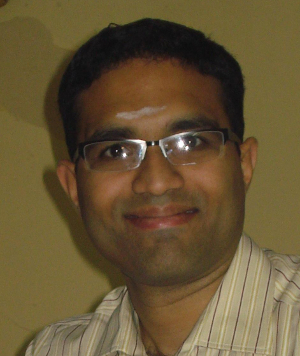HPCE Highlight

|
Narasimhan SwaminathanDepartment of Mechanical EngineeringAreas of interest: Radiation Damage in Materials, Mechanical Behaviour of Polymers and Stress-diffusion Interactions in Li-ion Battery Electrodes |
Narasimhan Swaminathan is currently an Associate Professor in the department of Mechanical Engineering at IIT Madras. Before his tenure at IIT, he was a Post Doctoral Research Associate in the Materials Science and Engineering Department at the University of Wisconsin-Madison from 2009 to 2012. He obtained his Ph.D. from the Georgia Institute of Technology in 2009. His research area is an amalgamation of computational mechanics and materials science. Specifically, he works on radiation damage in materials, mechanical behaviour of polymers and stress-diffusion interactions in Li-ion battery electrodes.
How does your group keep HPCE cluster busy?
Our group (Computational Materials and Mechanics Group) at IIT Madras, explores radiation, mechanical and electrochemical response of materials. We use HPCE cluster to conduct virtual experiments of situations which are almost impossible to realise in a real laboratory. To be specific, we conduct molecular dynamics simulations to study mechanical response of polymers at the atomistic level, nano-indentation of new materials and displacement cascades on materials for fission and fusion.
How do you see HPCE landscape in the domain of your research area change over the years?
Although the framework of several simulation techniques has been available for a long time, the increase in computing power has made it possible to realise system sizes and time scales which are much larger than what could be handled earlier. For example, it was possible for us to conduct simulations which span over a month or so to simulate a quasi-static deformation of a polymer film. Over the years, we do hope that the increase in computing power along with coarse-graining methods will enable exploration of larger systems and long-time scale phenomenon at the atomistic level.
What would you suggest to new faculty members and new students in your research area?
One of the key things I feel is for computer scientists (CS) and non-CS to come together and solve problems of common interest. Often, non-CS have to handle problems with very large degrees of freedom, which could require special parallelisation schemes. These schemes may be already existing or undergoing transformation within the CS community. It would be great for the CS and the non-CS communities to explore how they could help each other. While it is important for each of us to develop expertise in our own areas, it is crucial that we leverage our current expertise for a common purpose. This is perhaps what I will suggest new faculty members (with interest in computational science) and new students as well.
HPCE Highlight showcases the work of IIT Madras faculty members and their groups in High Performance Computing. It is powered by HPCE, Computer Center, IIT Madras.
